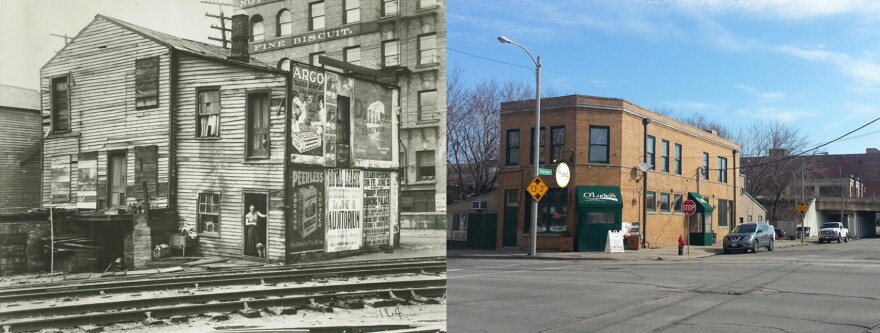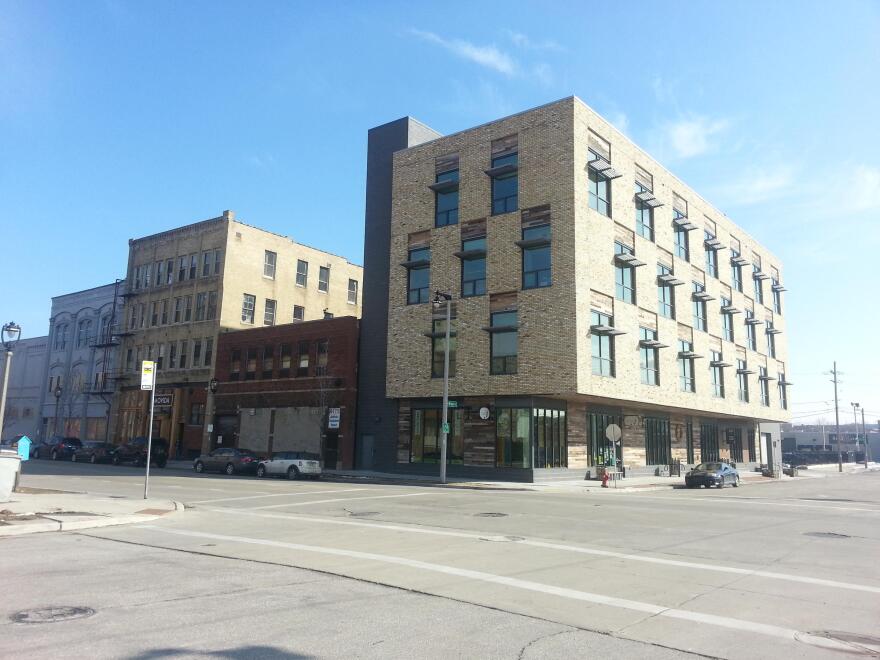Milwaukee was ground zero for the industrial boom of the late 19th century. Hundreds of machine shops were operating in the heart of the city; many of their inventions helped grow the companies into worldwide enterprises. Yet today, Wisconsin ranks toward the bottom for entrepreneurship while the business community works to improve the numbers.
“This was kind of the Silicon Valley of the late 1800s," local historian John Gurda says.
Standing at the busy intersection of 1st and Florida in Milwaukee’s Walker’s Point neighborhood, Gurda says the two-block area is where much of the city’s innovation began more than a century ago.
“You had small shops that became large ones and they included Allis Chalmers, Harnischfeger, Chain Belt, A. O. Smith, Allen Bradley and Ladish,” Gurda says.
Gurda says the early shop owners invented and churned out a slew of products designed to make heavy industry easier.

“The Allis Works which became Allis Chalmers, they made steam engines, saw mill equipment, flour mill equipment and then right across the street, you had Henry Harnischfeger experimenting with designs for an overhead crane that was driven by chains instead of ropes,” Gurda says.
After their shifts, workers would gather at nearby watering holes. We decided to continue our conversation at one of them.
“They were able to succeed because they had market solutions, they had products that people could use,” Gurda says.
Gurda says skilled labor also helped make the city famous. “This was the heyday of industrial expansion and innovation, and Milwaukee had a critical mass of both creative thinkers and workers who could make those visions realities,” Gurda says.
Gurda says many early entrepreneurs were immigrants. One was C. J. Smith. He moved to Milwaukee from London and started a bicycle parts company in Walker’s Point in 1874.

The business expanded quickly and C. J. brought one of his sons into the fold, Arthur Oliver. He eventually grew the company into the A.O. Smith Corporation. Company spokesman Chuck Wright says Smith developed the first steel car frame at the family shop. Word got back to Automobile Manufacturer Henry Ford in Detroit.
“It was a small and very tight industry in those days, pretty much everybody knew everybody. He had heard about this company in Milwaukee that knew how to make frames. Henry Ford came here, they met. Henry Ford told A.O. Smith, I need 10,000 frames and I need them in four months. Can you do it? A.O Smith’s reply was, that’s what we’re here for,” Wright says.
Yet Wright says banks at the time were hesitant to lend money to the young entrepreneurs. So, many of them, including A. O. Smith, turned to friends.
“He brought in several partners, they put up the cash. They put up $175,000 to buy this business and that’s how they capitalized,” Wright says.
Wright says the innovation boom did wonders for Milwaukee’s economy, creating thousands of jobs. The explosion continued through World War II, according to Dan Steininger, head of BizStarts Milwaukee.
“Our products were all over the world. There’s no question we couldn’t have won World War II in the time we did, without Milwaukee products. Harnischfeger, big industrial machinery, Ampco Metal was a big plant here at the time, they supplied brass fittings for some of the aircraft,” Steininger says.
Steininger’s nonprofit is located at Schlitz Park, where another entrepreneur, Joseph A. Schlitz, started his brewery. It became the world’s best-selling beer and sales remained strong into the 1970s. Steininger says that’s when Milwaukee started slipping in the rankings. The old companies were reluctant to adapt to changing times.
“We did not continue to innovate the way companies need to do. We got very comfortable in our ways. People did not take the risks on new technology and automating things. The problem with business is if you get into a comfort level and you want to stay there, your chances of survival are pretty slim,” Steininger says.
Plant closings challenged Milwaukee to reinvent itself. Some new entrepreneurial efforts have focused on water and health care, while manufacturing remains a staple.







